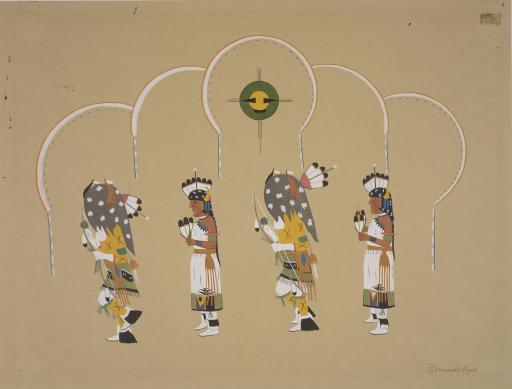Male and female figures from the Buffalo Dance, C. Szwedzicki; Romando Vigil
Artwork Overview
C. Szwedzicki, publisher
active 1929–1952
Male and female figures from the Buffalo Dance,
1932
Portfolio/Series title: Pueblo Indian Painting Portfolio
Where object was made: United States
Material/technique: pochoir
Dimensions:
Image Dimensions Height/Width (Height x Width): 294 x 411 mm
Image Dimensions Height/Width (Height x Width): 11 9/16 x 16 3/16 in
Sheet/Paper Dimensions (Height x Width): 370 x 490 mm
Sheet/Paper Dimensions (Height x Width): 14 9/16 x 19 5/16 in
Image Dimensions Height/Width (Height x Width): 294 x 411 mm
Image Dimensions Height/Width (Height x Width): 11 9/16 x 16 3/16 in
Sheet/Paper Dimensions (Height x Width): 370 x 490 mm
Sheet/Paper Dimensions (Height x Width): 14 9/16 x 19 5/16 in
Credit line: Transfer from Library
Accession number: 1987.0240
Not on display
If you wish to reproduce this image, please submit an image request


